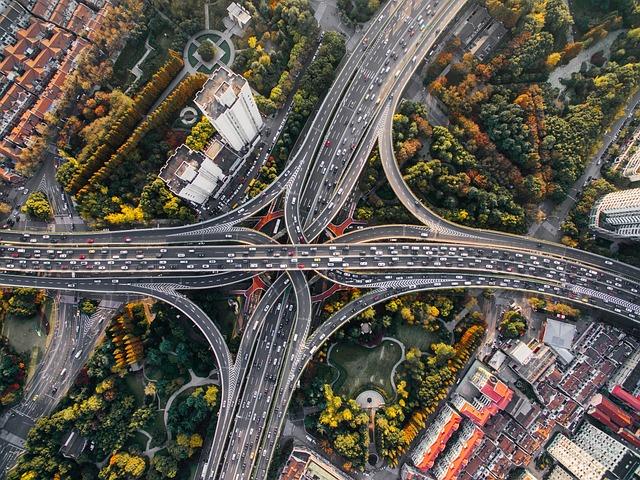In a world where infrastructure stands as the backbone of societal progress, Pakistan is poised at a crossroads, ready to embark on a transformative journey. The nation’s roads, bridges, railways, and urban landscapes tell stories of both the challenges faced and the potential yet to be realized. As the heartbeats of commerce and community, these structures are not just conduits for movement; they are lifelines that can elevate the economy and enhance the quality of life for millions. “Revamping Pakistan’s Infrastructure: A Path to Progress” explores the critical need for modernization and strategic investment, shedding light on innovative solutions and successful models from around the globe. This article delves into the intricate tapestry of Pakistan’s infrastructural landscape, revealing how a comprehensive overhaul can unlock new avenues for growth, foster resilience, and pave the way for a brighter, more connected future.
Innovative Financing Models for Sustainable Infrastructure Development
Pakistan’s journey towards a robust infrastructure landscape necessitates a shift towards innovative financing strategies that mobilize funds efficiently while addressing sustainability concerns. A blend of public-private partnerships (PPPs) and green bonds can open unprecedented avenues for investment, allowing for a more resilient infrastructure ecosystem. By leveraging the strengths of both sectors, Pakistan can ensure that vital projects are not only funded but also maintained in an environmentally conscious manner. The potential for impact investments further broadens the financial toolkit, engaging local communities and investors who prioritize long-term benefits over short-term gains.
Moreover, tapping into international funding mechanisms such as climate finance initiatives or infrastructure investment funds can play a transformative role in Pakistan’s infrastructure development. The integration of digital financing platforms provides a streamlined approach for raising capital efficiently, making it easier to connect local entrepreneurs with global investors. To further support these financing models, a structured framework is essential, one that encourages transparency and accountability while fostering an attractive investment climate. The synergy between traditional funding sources and new-age financial technologies can propel Pakistan into a new era of infrastructure development.

Harnessing Technology and Smart Solutions for Efficient Urban Planning
In today’s rapidly evolving urban landscape, technology has emerged as a pivotal ally in reshaping city infrastructures to meet modern challenges. By integrating smart city solutions, local governments can enhance the quality of life for citizens while optimizing resource management. This approach hinges on a combination of data analytics, Internet of Things (IoT), and artificial intelligence to create responsive urban environments. For instance, intelligent traffic management systems can reduce congestion, minimize pollution, and enhance public safety. The use of real-time data allows urban planners to make informed decisions, adapting to the changing needs of the population swiftly and efficiently.
Moreover, the integration of sustainable practices into urban planning not only addresses immediate concerns but also secures a healthier environment for future generations. Initiatives like the establishment of green spaces, renewable energy sources, and smart waste management systems contribute to sustainable urban development. By fostering collaboration among various stakeholders—including local government, private sector, and communities—cities can prioritize infrastructure projects that significantly impact their resilience. The following table illustrates key technological solutions and their benefits:
| Solution | Benefits |
|---|---|
| Smart Grids | Optimized energy use and reduced outages |
| Connected Sensors | Real-time monitoring of urban conditions |
| Digital Platforms | Enhanced citizen engagement and service delivery |

Enhancing Transportation Networks to Foster Economic Growth
To unlock the potential of Pakistan’s diverse economy, an intricate enhancement of transportation networks is essential. This includes modernizing existing infrastructure while simultaneously investing in new projects that expand connectivity across regions. By prioritizing the development of roads, railways, and airports, Pakistan can ensure that goods and services flow seamlessly. The benefits of such enhancements can be manifold: they can reduce travel times, lower transportation costs, and ultimately stimulate trade and investment. Building robust networks also facilitates easy access to remote areas, allowing local businesses to thrive and integrate into the larger economy.
Furthermore, the focus on green transportation options can play a pivotal role in sustainable economic growth. Initiatives aimed at promoting public transport systems, such as buses and electric trains, can significantly reduce traffic congestion and carbon emissions. Stakeholders must consider:
- Integration of Smart Technology: Implement GPS and real-time tracking for more efficient routing.
- Incentives for Eco-Friendly Transport: Establish tax benefits for electric vehicles to encourage greener choices.
- Public-Private Partnerships: Foster collaboration between government and private sectors to fund infrastructure projects.
Investment in strategic transport hubs can serve as catalysts for economic growth. The following table highlights key infrastructure projects and their potential impacts:
| Project | Location | Expected Impact |
|---|---|---|
| Karachi Circular Railway | Karachi | Alleviate traffic congestion and enhance urban mobility |
| China-Pakistan Economic Corridor | Multiple Regions | Boost trade and energy supplies |
| M-6 Motorway | Multan to Sukkur | Reduce travel time and connect rural economies |

Strengthening Public-Private Partnerships for Long-Term Success
Public-private partnerships (PPPs) have emerged as a pivotal mechanism to revitalize infrastructure development in Pakistan. By combining the resources, expertise, and innovation of both sectors, these collaborations ensure that large-scale projects are not only financially viable but also sustainable in the long run. The benefits of such partnerships include:
- Resource Optimization: Leveraging private sector funding and management expertise can significantly reduce public financial burdens.
- Innovation Drive: Private firms often bring cutting-edge technologies and best practices that can elevate project standards.
- Risk Management: Sharing risks allows for more balanced project execution and a reduction in the likelihood of cost overruns.
Moreover, effective frameworks and regulations can encourage a flourishing environment for PPPs. Establishing clear guidelines can streamline project approvals, ensuring that they are aligned with national priorities and community needs. Transparency in contract terms, periodic audits, and stakeholder engagement play crucial roles in building trust. A well-structured partnership can also pave the way for future collaborations, creating a ripple effect of improved infrastructure projects across the nation. Key elements for success include:
| Element | Description |
|---|---|
| Stable Regulatory Environment | Clear policies that support long-term investment and risk-sharing. |
| Stakeholder Engagement | Inclusion of local communities and investors in the planning process. |
| Performance Monitoring | Regular assessments to ensure adherence to project goals and standards. |
To Conclude
As we stand at the crossroads of potential and challenge, the revitalization of Pakistan’s infrastructure emerges as not just a necessity but a beacon for progress. With every brick laid and every road paved, the nation inches closer to a future where connectivity fuels economic growth, community development, and social harmony. The journey is fraught with complexities, yet the rewards promise to uplift millions, weaving a tapestry of opportunity across urban and rural landscapes alike.
By investing in resilient infrastructure—bridges that connect, highways that empower, and networks that inspire—Pakistan can harness its unique position as a gateway to the region and beyond. The commitment to this transformative path requires a concerted effort from policymakers, private investors, and citizens alike, forging partnerships that transcend traditional boundaries.
As we move forward, let us remember that infrastructure is more than just concrete and steel; it is the framework of our aspirations. Together, we can build not just a network of roads, but a pathway to a brighter, more prosperous tomorrow. The challenge awaits, and with it, the promise of a reinvigorated Pakistan—ready to rise and redefine its place on the world stage.



